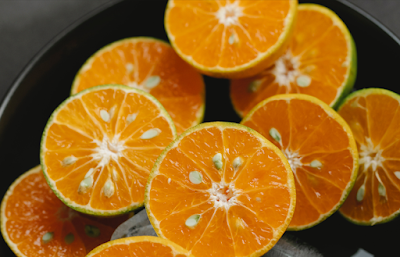Delightful Delicacies: 10 Best American Recipes for Adults
 |
| Photo credit: Kevin via Pexels |
·
Classic Cheeseburger: Juicy beef patty, melted cheese, fresh toppings, and
toasted buns.
·
Buffalo Wings: Spicy chicken wings drenched in buffalo sauce, served
with blue cheese dressing.
·
Lobster Roll: East Coast delight with succulent lobster meat, mayo,
lemon juice, and herbs.
·
BBQ Ribs: Slow-cooked pork ribs slathered in smoky and tangy
barbecue sauce.
·
Shrimp and Grits: Southern dish with shrimp, bacon, and creamy, cheesy
grits.
·
Chicken and Waffles:
Crispy fried chicken paired with fluffy waffles. A sweet masterpiece.
·
New England Clam
Chowder: Creamy soup with clams, potatoes,
onions, and bacon.
·
Beef Stroganoff: Tender beef strips cooked with mushrooms and onions in a
rich cream sauce.
·
Caesar Salad: Refreshing salad with crisp romaine lettuce, creamy
Caesar dressing, and Parmesan cheese.
·
Key Lime Pie: Tangy dessert with a graham cracker crust and
silky-smooth lime filling.
Why Do Americans Love These Recipes?
 |
| Photo credit: Nadia via Pexels |
1. Nostalgia: Evoking
childhood memories and emotional connection.
2. Bold Tastes: Diverse flavors appealing to the American
palate.
3. Cultural Diversity:
Influences from immigrant communities, embracing different flavors.
4. Versatility: Recipes are customizable to meet preferences and dietary choices.
5. Social Nature:
Associated with gatherings, celebrations, and holidays.
6. Iconic Status: Recipes
synonymous with American cuisine, globally recognized.
Step-by-Step Recipe-Making
 |
| Photo credit: Doan via Pexel |
·
Classic Cheeseburger
Preheat grill, shape beef into patties, cook, melt
cheese, toast buns, assemble.
· Buffalo Wings
Preheat oven, coat wings, bake until crispy, mix sauce,
toss wings, serve.
· Lobster Roll
Cook lobster meat, chop, combine with mayo, lemon juice,
herbs, fill rolls.
· BBQ Ribs
Preheat oven, season ribs, bake, brush with sauce,
grill/broil, serve.
· Shrimp and Grits
Cook bacon, sauté shrimp, prepare grits, stir in butter,
cheese, bacon, serve.
· Chicken and Waffles
Preheat oil, season chicken, prepare batter, fry chicken,
cook waffles, serve.
· New England Clam Chowder
Cook bacon, sauté onions, celery, add potatoes, broth,
simmer, thicken, add clams, serve.
· Beef Stroganoff
Brown beef, sauté onions, mushrooms, add broth,
Worcestershire, mustard, simmer, stir in sour cream, serve.
· Caesar Salad
Whisk dressing, toss lettuce, and add croutons, and cheese.
Optional: Add chicken or shrimp.
· Key Lime Pie
Make the crust, press and bake, combine filling, pour into crust, bake, chill, and garnish.
Conclusion
American
cuisine celebrates a fusion of flavors, influenced by cultural traditions brought
about by immigrant communities. These recipes exemplify the diverse and
beloved dishes that appeal to the American palate. They offer bold and
comforting flavors, customizable to suit individual preferences and dietary
choices. While they’re Nostalgic, social, and iconic, these timeless classics
bring people together. Embark on a culinary journey through vibrant American
flavors. Enjoy!






















